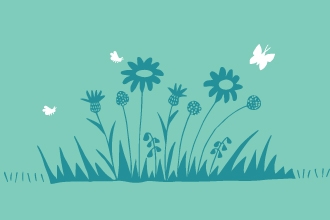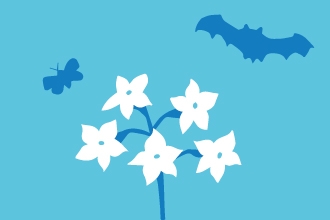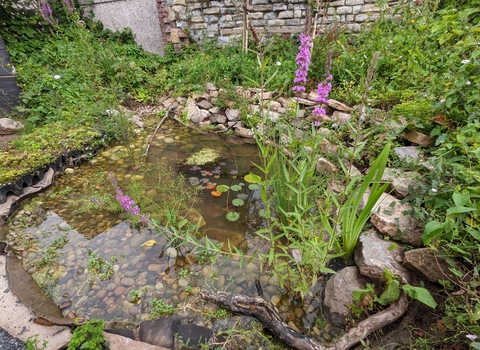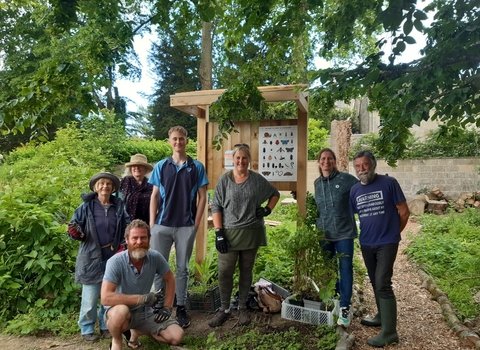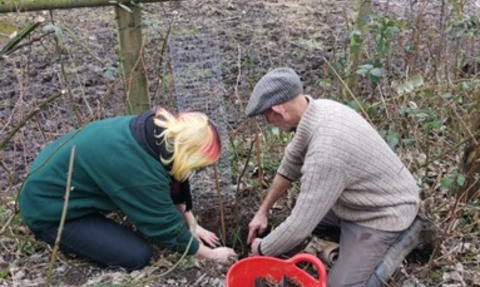
Amie Cook
Mount Skitham Conservation Woodland
Mount Skitham Conservation Woodland
Mount Skitham Conservation Woodland (MSCW) requested advice from the Team Wilder Community Ecologist: An interest in improving the woodland suffering from Ash Dieback, so that the woodland can be optimised for wildlife.
Overview
Background research found that MSCW was in a very important area for North Bristol wildlife.
The site includes a semi-natural woodland of mostly beech, ash and horse chestnut, with larger fields at the top. One of the fields has an ancient willow pond, which is in need of restoration, another un-grazed field is developing into a healthy scrub mosaic, and several natural springs across the hillside creating a very wet woodland at the base of the hill most of the year round. MSCW is bordered by the huge, privately owned Haw Wood to the northeast, a highly managed aerospace fuel storage site and the village of Hallen to the west.
The hillside upon which the woodland is located is bisected by the M5, and the area is at risk of becoming fragmented. The woodland was thought to have been planted after the war, but there is historic evidence of human management and site use that dates back centuries.
Nick, the owner, has already installed unlined clay ponds across the site to manage the water flow and diversify the habitats on site, seeking to use them for irrigation and cattle over the summer. He has also established a grazing herd of highland cattle which have free range over half of the site, creating an interesting contrast of the landscape.
Nick has been removing diseased ash and horse chestnut trees where necessary and has had some difficulty with dealing with the amount of water the site retains in winter. He is interested in attracting as much wildlife as possible to the site but needs to build resilience against more tree loss due to the dieback.
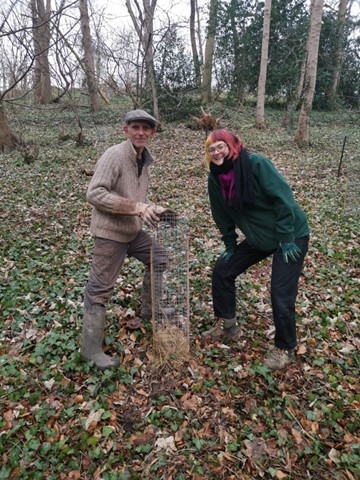
Amie Cook
Advice from TWEAS
- Increasing understory diversity in the woodland, which is dominated by trees of similar age.
- One approach is to increase the number of smaller, understory trees in the woodland. Suggested tree species include hazel, to support small mammals like wood mice and bank voles, alder buckthorn to support brimstone butterflies and brimstone moths, and hawthorn for wintering birds. Nick is interested in traditional land management and wants to coppice the hazel to use in hedge laying and for fences across the site.
- Planting native hardwoods such as oak and hornbeam where ash trees are being lost, to create a resilient successive woodland, futureproofing the canopy cover of the site.
- If there are any ash trees showing resilience to dieback, share the location of these with the Living Ash Project.
- Retaining the central clearing in the forest caused by diseased tree removal. This creates a glade for bats to forage and birds to hunt. Also creates an ‘edge effect’ for woodland plants to colonise, such as foxglove and willowherb.
- The oldest pond on site is doing well, with watercress and other native marginals creating a pond habitat highly suitable for amphibians. Recreate this in other sites by increasing the light reaching the ponds, and seeding with marginal plants.
- Consider occasionally introducing some cattle to the scrub mosaic field for short periods, every other year, to ensure it does not become dominated by bramble.
- Introducing bat and raptor boxes to the woodland edge near the top fields.
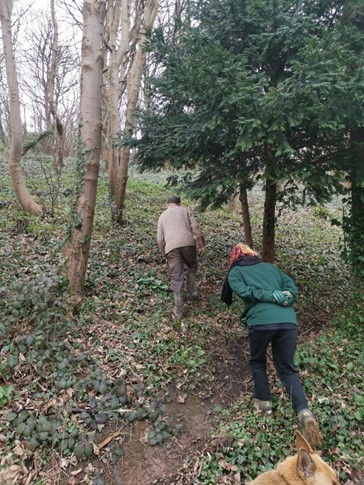
Amie Cook
Resulting Actions
- Planted 180+ young native trees and home grown local oaks
- Establishing hawthorn hedgerow along old fenceline
- Planting more woodland ground flora species
- Investigating options for willow scrub management in wetter areas of site
What next?
To incorporate bat boxes and barn owl box to a wildlife/ viewing tower
Nick is hoping to get planning permission to build a viewing tower structure in his top field, for watching wildlife. This was an existing plan, but after discussing the variety of bats on site, his sightings of goshawks and buzzards and nearby barn owl records, Nick wants to incorporate access to the structure for bats with bat bricks and to conceal owl nesting boxes inside the structure. By having a flatter roof than originally planned, there is also opportunity for other raptors such as peregrines to nest should they be interested.

Amie Cook
To lay existing line of beech trees in woodland
As well as eventually laying the newly planted hawthorn hedge, we found a line of beech trees in the north of the woodland that Nick wanted to lay, to create a denser wood habitat feature for wildlife. This would open up the canopy in this area, allowing more light in, and also create more hibernacula for reptiles and small mammals.
Restoring the zombie pond
Nick has recently found a ‘zombie pond’ in one field that is surrounded in a thick hedge of bramble and has several veteran crack willow growing in the centre.
The pond still holds water but is currently very poor quality, with murky water and no vegetation present. With some signposting to relevant resources, Nick hopes to manage this pond back to health, removing some of the canopy over it and introducing some marginal plants to try and resurrect the pond back to being able to supporting life.
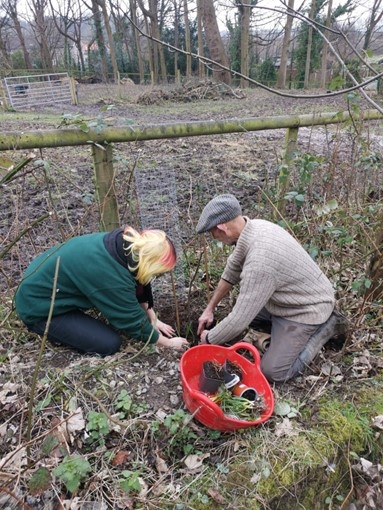
Amie Cook
Feedback from Nick
“Last year I planted 182 trees. All of the planting in this area went in as a result of talking with Amie. All the oaks are acorns that I’ve collected myself, started in pots and then planted out. Where we keep the cows on a separate part of the woodland, currently we’ve got a fence, but I’ve now planted a native hedge and eventually I want to take the fence out and manage my livestock completely with a hedgerow.
I think the most important thing for me was coming away from the consultation with an action plan, a ‘to do’ list. Because sometimes you’re not sure where to start, but actually we’ve achieved so much on that list. Planting native trees has been the biggest thing that the Team Wilder Ecological Advisory Service has helped with".
Resources
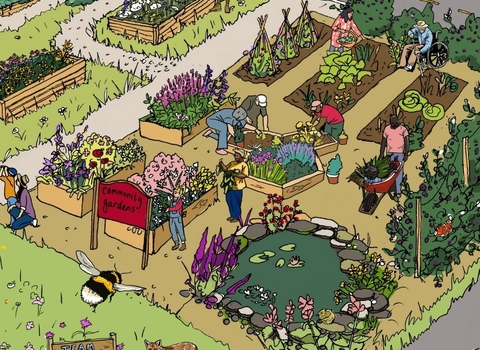
(C) Hannah Bunn
Be part of Team Wilder
All actions for nature collectively add up and creates life for people and wildlife.
Share your actions for nature to inspire and motivate others.
Talk about what you do to make these actions part of everyday life.
Share and tag us on @avonwt on social media as well.
Log your actions for nature on the map


